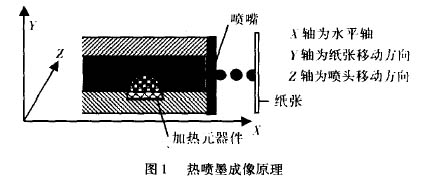Analysis of the Key Factors Affecting the Quality of Inkjet Printing (Part One)
Abstract ] The principle of inkjet printing imaging is introduced. The thermal inkjet imaging system is taken as the research object. The imaging mechanism of the system, the relationship between the ink and the imaged medium, and the influence on the quality of inkjet printing are discussed. How to control the key parameters is discussed. Discussed.
Keywords: inkjet printing; imaging technology; quality
Inkjet printing is an important part of the digital printing system. It has been widely used in various areas of packaging and printing due to its wide adaptability, high-speed intelligence, and low pollution. The diversified features of inkjet EO, ~U in EO, ~U format, ink, and printing media have expanded the connotation of traditional printing. At present, digital inkjet printing, digital proofing, and digital inkjet markets have been formed. Inkjet printing is a non-contact dot-dot reproduction technique in which fine droplets of ink are ejected through a nozzle onto a substrate to form an image. The inkjet print image is clear and the color reproduction quality is satisfactory, but its quality performance depends on the accuracy of the device, the ink, and the imaging suitability between the image media.
I inkjet imaging principle
The inkjet imaging system is mainly composed of a nozzle, an image receiving medium and a necessary transmission control system. The nozzle and the image receiving medium are in a non-contact state, and the small ink droplets ejected by the nozzle directly adhere to the substrate to form a visible image J. Inkjet imaging technology is divided into piezoelectric crystal oscillation, thermal bubble, electrostatic attraction and other imaging methods according to the difference of ink droplet control methods. Piezoelectric crystal oscillation and thermal bubble are two commonly used inkjet technologies. The thermal bubble jet technology has the characteristics of simple structure, high miniaturization, high integration, and low price, so the application is more popular. In this paper, we mainly discuss the relationship between the key factors affecting the quality of inkjet printing by studying thermal bubble jet (thermal inkjet) imaging system.
The core of the thermal inkjet imaging system is its nozzle, which consists of a heating element, an ink container and a nozzle. The nozzle structure is very compact. The working principle of thermal inkjet imaging is shown in Figure I. During operation, the ink is heated by a micro thermal resistor disposed in the ink-jet cavity. Due to the increase in temperature, the ink solvent on the surface of the thermal resistance vaporizes and forms bubbles. The generation of gasification and bubbles increases the ink volume due to the ink. The non-compressible efficiency axis is a horizontal axis, and the volume of the ink container must be kept constant. This creates a pressure on the surrounding ink. This pressure is transmitted to the nozzle, resulting in the formation of ink droplets at the nozzle, allowing a specific amount of ink to flow from the nozzle. The holes are ejected and the droplets rapidly dry due to the diffusion and absorption effects after being ejected onto the surface of the paper, creating a recording spot.

2 Factors Affecting the Quality of Inkjet Printing
2.1 The size of the drop
The size of the ink droplet determines the physical resolution of the inkjet imaging system, directly affecting the accuracy of inkjet printing. In order to maintain the minimum surface tension of the liquid, the ink droplets produced by the thermal ink jet technology are spherical, and the frequency of ink droplet generation is about 5-8 kHz. The physical resolution of the system is related to the volume of the ink droplets.
Assuming that the physical resolution of the imaging system is R and the droplet diameter and volume are d and , the conversion relationship between the droplet diameter and volume is:

From this it can be seen that assuming a droplet volume of 4 pL, the physical resolution of the device R
About 1290 dpi.
However, due to the characteristics of the ink itself and the different spreading effects on the different image-bearing media, the maximum recorded dots eventually formed are also different. For example, the recording point expansion rate formed on the surface of the paper is between 50% and 65%, so the actual imaging resolution is relatively low.
Therefore, the smaller the nozzle is designed, the smaller the volume of formed droplets, and the higher the physical resolution R of the system, the higher the accuracy of inkjet printing. However, the smaller the ink droplets are formed, the more difficult it is to increase the printing speed, which in turn limits the image quality.
(to be continued)
Bakery Products,Baking Container,Baked Food Box,Cake Pastries Container
EVER GREEN(ZHEJIANG)NEW MATERIAL CO., LTD / KUNSHAN GREENPACK CO.,LTD , https://www.zjchangjingpack.com